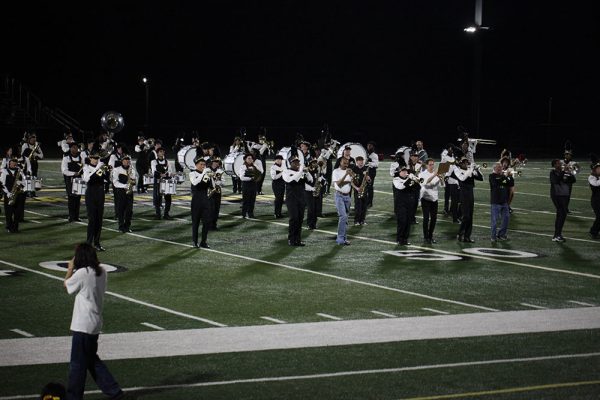‘Fallout 4’ Designers Appeal to Mass Audience, Lose Artistry
Due to the immense amount of content in Bethesda Games’ Fallout 4, 1,000 words may not seem enough for an adequate discussion. However, it is actually difficult for me to write about the game at all, as it doesn’t present any new ideas worth covering. It can be effectively summarized as a poor rehash of Fallout 3.
Fallout 4, like other iterations in the series, is set in a post-apocalyptic America styled with a 1950s aesthetic. The original developer, Interplay, went bankrupt in 2004 after Fallout 2’s release and the rights to the game was sold to Bethesda, who released Fallout 3 in 2008, according to Dailytech.
It’s worth noting that the game’s overall aesthetic is radically different from previous iterations in that it’s post-apocalyptic landscape is a lot less inspired, abandoning the Mad Max-esque aesthetic of earlier versions.
As in 1-3, the player of Fallout 4 chooses his own appearance, gender and personality.
The story offers a similar experience to what Fallout 3 offered for the PS3/360 era. For example, both plots depict protagonists leaving underground shelters in order to seek a lost family member before unearthing a great conspiracy.
Furthermore, Fallout 4’s post apocalyptic Boston setting is so poorly executed that it constantly recalls Fallout 3’s Washington DC. In fact, it feels like the designers picked Boston as a setting, then had no idea what to do with it, as the designs of the map’s assets are rehashed from previous iterations of the series.
Boston’s immediately recognizable landmarks are sloppily assembled in a manner that feels extremely disconnected from reality. Furthermore, a large portion of the map lacks meaningful content. While it is typical to have blank space on the maps of open world games, Fallout 4’s setting has too much empty space.
However, despite their intentional similarities, Fallout 4 is radically different from Fallout 3 in that it fails in the areas Fallout 3 excelled. Fallout 3’s very obvious flaws, such as its poor dialogue and graphics, were forgiven as it was considered radically innovative.
It was a game that streamlined traditional role playing games into a more modern and accessible format. Players are unlikely to put up with these flaws in a new game that does not make the same advances.
On the other hand, due to its lack of significant improvements, Fallout 4 is far from having a meaningful impact. It attempts to innovate by allowing players to build settlements. While this is a nice feature, the fact that one’s character is able to build complex structures in seconds in a setting that’s characterized by its lack of reconstruction forces the player to resort to suspension of disbelief. This disconnect ties into the game’s weakness in the area of the franchise’s key strength, which is the immersive atmosphere created by its grounded sense of realism.
The lack of a compelling atmosphere is ultimately due to poor writing, which is largely uninteresting and painfully awkward. It’s noticeable that this isn’t the result of any hack writers, but rather, the lack of any effort, as the game has uneven pacing.
For example, in the first 30 minutes, the player agrees to go into an underground nuclear shelter, is cryogenically frozen, then almost immediately fights a Deathclaw, one of the game’s most dangerous opponents while using a variant of the game’s most powerful armor. This poor pacing ultimately leads to a meandering plot line that fails to keep the player’s interest.
The dialogue is some of the worst I’ve ever seen in a professional game, as none of the characters are well developed. The protagonist reconnects with one character–the Vault Tec Rep– after 200 years, and despite this stretch of time, he wears the same clothes, a shorthand likely implemented by the designers on purpose, as the writers knew his clothes were his only recognizable feature.
Another feature of the game is a new dialogue system in which the player is limited to 3-4 lines. The intention was to streamline dialogue in order to allow it to progress at a realistic pace. However, the dialogue options are often so nondescript that it’s impossible for the player to make informed decisions. For example, a contextual sarcasm option is offered that only reads “sarcastic”, offering no details whatsoever.
However, these limited choices are insignificant, since player choice has very little impact on game play anyway. All significant moments play out the same, regardless of what dialogue options the player chooses. In the beginning of the game, the player is forced to enter the underground shelter even if he or she refuses to do so.
Thus far, the only consequences I’ve seen from my choices have been reflected in other character’s comments. Other games in the franchise feature radically different changes in gameplay that depend on the player’s choices.
Despite the developer’s reputation for making games featuring phenomenal artistic directions, Fallout 4 also falls short in this regard, as its artistic style is uninspired. A common complaint about the game has been its so-called poor graphical fidelity.
In my opinion, it’s actually the poor artistry, as opposed to technical quality, that is the root of the game’s visual weakness. When Bethesda released Skyrim in 2011 featuring graphics that did not match up to the technical intricacy of other games released that year, the game was still praised due to its commendable artistic style.
In spite of its many flaws, Fallout 4 is by no means a poor game. It’s very easy to become engrossed for a significant stretch of time before losing interest. However, it was clearly made for a safe, less critical demographic, as it is designed to be accessible. It lacks many of the series’ trademark characteristics inspired by traditional role playing games.
Unlike previous Fallout games, the new version is best described as a stereotypical open world action game, as opposed to an atmospheric strategy game that’s driven by writing and player choices. It’s also worth noting that it feels more like a prototype for the developers’ next game, as it features some advancements in technology but little significant change to the fundamental aspects that were featured in Fallout 3 and Skyrim.













